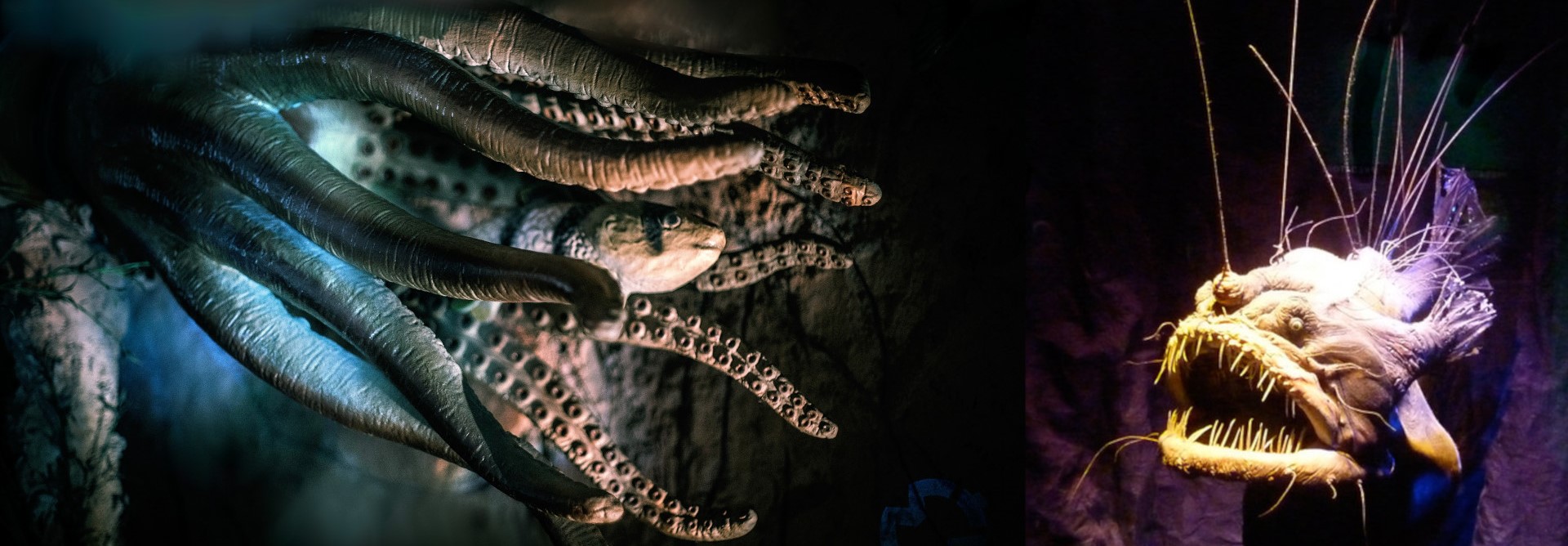Food traditions
Welcome to the Empire of the Covenant! In this federal empire, tensions are increasing between the Light and Dark political factions. Light Lady Annabelle is the target of the Leader of the Dark faction and in order to gain allies to protect her, she starts Courtship Rituals to make suitors compete for her hand—but then the Dark Lord joins in. Come read about Annabelle's Courtship and her world!
Introduction to the story | Lady Annabelle Alyssenne | The imperial nobility | Novel upcoming
Introduction to the story | Lady Annabelle Alyssenne | The imperial nobility | Novel upcoming
General information
Each Estate has its own cuisine and food culture, however because of the ease of travel thanks to location pentagrams (at least for the powerful), there has been widespread cultural exchange over the continent, if not of actual material trade beyond luxury items. The only current limitation is the climate that makes growing or breeding some aliments or animals difficult in certain region. Because of this, four groups of cuisine can be distinguished in modern time: imperial southern, imperial northern, from the steppes, and from the Northern Islands.
Eating-out culture is well developed in the empire, although it is more common in larger cities. Most of those will have at least a couple of restaurants providing a wide variety of food, and some of them are famous for their exotic dishes.
Magic is everywhere, including in all animals, plants and fungi. The content inside them however varies, just as in any crafting materials, depending on how the ruler of the Estate and their people take care of them. Eating food rich in magic is good to help replenish people's reserve, but it is not simply a question of ingesting as much magic as possible. Sometimes magic is attached strongly to molecules that are inedible, or two aliments will have magic that doesn't mesh well together, or even an aliment with strong magic will wash out the rest of the dish. Fermentation increase the magic content of the aliment.
During special rituals such as those to celebrate solstices and equinoxes, the Land's magic is specifically imbued into aliments that are then eaten by people. This creates a special link with the Land for a few hours, heightens people's magic, and gives them a pleasant buzz similar to what alcohol can do.
Lady Merisse drank slowly from her goblet of apple juice. The magic of the Alyssenne's Land slowly sipped into her body as she did so, creating a faint connection between her and that foreign Land, as if she had been born to its illustrious House. Whatever equinox celebrations she had participated before, this could not live up to what a proper ritual led by the high nobility was like! Just one glass and she already had enough energy to conquer three Estates tonight! A group of young women moved in front of her, and she frowned as she recognised the crests on their robes. Dark Houses. Her father-in-law jolted her and she sent him a quelling look that he ignored. "Don't go near those nasty types," he hissed loudly. "There have been more than a few reports of cannibalism from that region recently!" Lady Merisse blinked and looked frankly at the girls without hiding her curiosity. Was that some nasty rumours or was there a hint of truth there? Well, humans would, of course, have more magic than mere plants and animals, so in a way it made sense to use them in rituals or consume them or something... It would be surprising if nobody in the empire had not ever tried...
Imperial south
In the south of the empire, the climate is temperate. Very few spices are available and seasoning is done with a wide variety of herbs, while cooking is itself is butter-based.
Grains: wheat and barley.
Fruits: apple, peach, apricot, pear, plum, cherry, berry-type fruits, and grape.
Vegetable: cabbages, bell peppers, potato, green, carrot, leek, turnip, eggplant, courgette, and shallot.
Meat from animal husbandry: lamb, sheep, cow, chicken, duck, goose, and pig.
Game meat: pigeon, pheasant, rabbit, wild boar, and deer.
Fresh water fish.
Dessert: made with fruits, dairy and wheat. Cocoa products are also highly appreciated.
Others: dairy product with many regional cheeses, mushrooms, and snails.
Drinks: fruit juices and wines made from different fruits. Food is classically consumed in four dishes:a small starter made of either meat or vegetable. Soups or small vegetable salads are common here.
a main dish made by a third of grains or starch, a third of meat, fish or eggs, and a third of fruits and vegetables. Mixing sweet and sour taste by adding fruits to a meat dish is common. Most main dishes are made with thick sauces.
a cheese and salad course.
a sweet dessert.
There are three meals throughout the day:a light breakfast made of sweets, fruits and bread.
lunch, the main meal of the day made of a 3 or 4 courses meal.
a light dinner, often consisting of a larger portion of what would be a starter during lunch. The only exception is during big celebrations and important events, during which dinner becomes a huge feast that last hours with sometimes more than a dozen courses.
Southern cuisine is considered refined in the whole of the empire, and it served in the Red Lion inn in Arianie that caters to the imperial nobility.
Fruits: apple, peach, apricot, pear, plum, cherry, berry-type fruits, and grape.
Vegetable: cabbages, bell peppers, potato, green, carrot, leek, turnip, eggplant, courgette, and shallot.
Meat from animal husbandry: lamb, sheep, cow, chicken, duck, goose, and pig.
Game meat: pigeon, pheasant, rabbit, wild boar, and deer.
Fresh water fish.
Dessert: made with fruits, dairy and wheat. Cocoa products are also highly appreciated.
Others: dairy product with many regional cheeses, mushrooms, and snails.
Drinks: fruit juices and wines made from different fruits. Food is classically consumed in four dishes:
There are three meals throughout the day:
Southern cuisine is considered refined in the whole of the empire, and it served in the Red Lion inn in Arianie that caters to the imperial nobility.
When Lady Merisse finally got to sit down at a small table to partake into the equinox feast, she was severely disappointed. The drinks and fruits she had already eaten had been directly part of the ritual and imbued with Land's magic, and so their taste had been glorious. The rest of the food, however... It was just like the Red Lion, all sad and bland with no spice in sight...
Imperial north
The climate in the north of the empire is tropical. Because of the proximity to the Northern Islands, a wide variety of spice is traded and incorporated in traditional dishes. Cooking is made with oil, in contrast to the butter used by the southerners. Nuts are often incorporated to dish and pastries, and yoghurt accompanies most dishes.
Grains: rice, wheat.
Fruits: plum, apricot, pomegranate, pear, apple, grape, fig, melon, orange, lemon.
Vegetables: squash, celery, lettuce, cucumber, garlic, aubergine, borage, pea, spinach, turnip, vine leaf, beet, carrot, and okra.
Fresh water fish.
Meat: camels, sheep, goat, chicken, lamb, and pigeon.
Spices: cinnamon, clove, saffron, cumin, sumac, nutmeg, oregano, mastic, cardamom and black pepper.
Desserts: honey, fruit syrup and spices are used to make pastries.
Others: nuts, yoghurt, dairy products.
Drinks: coffee, tea from leaves imported from the Northern Islands, and a yoghurt-based drink. Traditional dishes: soup with rice, vegetables and chicken or lamb; fruit or vegetable stuffed with meat; fried meat, vegetables and rice. Breakfast is an important meal and tends to be very rich, made with cheeses, olives, nuts, honey, vegetables and meat. Lunch tends to be lighter, often made of fried vegetables served with yoghurts. Dinner is served very late when the weather has cool and is an important meal where the traditional dishes are served. All dishes are served on the table at the same time.
Fruits: plum, apricot, pomegranate, pear, apple, grape, fig, melon, orange, lemon.
Vegetables: squash, celery, lettuce, cucumber, garlic, aubergine, borage, pea, spinach, turnip, vine leaf, beet, carrot, and okra.
Fresh water fish.
Meat: camels, sheep, goat, chicken, lamb, and pigeon.
Spices: cinnamon, clove, saffron, cumin, sumac, nutmeg, oregano, mastic, cardamom and black pepper.
Desserts: honey, fruit syrup and spices are used to make pastries.
Others: nuts, yoghurt, dairy products.
Drinks: coffee, tea from leaves imported from the Northern Islands, and a yoghurt-based drink. Traditional dishes: soup with rice, vegetables and chicken or lamb; fruit or vegetable stuffed with meat; fried meat, vegetables and rice. Breakfast is an important meal and tends to be very rich, made with cheeses, olives, nuts, honey, vegetables and meat. Lunch tends to be lighter, often made of fried vegetables served with yoghurts. Dinner is served very late when the weather has cool and is an important meal where the traditional dishes are served. All dishes are served on the table at the same time.

A northern dish made of roasted eggplants stuffed with a vegetable-meat-spice mix by Maderibeyza on Wikimedia Commons
Despite how interesting the evening at the Alyssenne Estate had been, it was a relief for Lady Merisse to go home and have a drink of spice hot wine waiting for her. Finally, proper food and drinks!
In the Steppes
There is no agriculture in the steppes, so the grains only come from trading with the neighbouring Estates from the empire. Vegetables and fruits are also rare. Most of the dishes of the steppes are made of dairy products and the meat of the animals they keep. Grains from trade: wheat.
Meat from animal husbandry: horse, sheep, goats, yak, snake, and dragon.
Fruit and vegetables: some root vegetables and wild berries.
Other: many dairy products and cheeses, abundant mushrooms that have a high magic content and are very nutritious.
Dessert: dried cheese biscuit (drained, sour milk that has been left outside to dry), clotted cream, and yak butter (kept wrapped in a sheep stomach for preservation).
Drinks: fermented milk and a very famous mushroom wine with a high concentration of magic that is traded through the empire at high prices. Traditional dishes: dried meat strips, meat-mushroom dumplings, deep fried meat inside a dough shell, meat-mushroom soups, meat-mushroom skewer grilled over an open fire, and deep-fried dough.

Dumpling dish from the Haut Plateau region by Brücke-Osteuropa on Wikimedia Commons

Mushroom wine by AmélieIS with an image from Yanovas on Pixaby
While Lady Merisse appreciated having been included in the negotiation party sent to the nomadic tribes, she was never getting into another one. Unsurprisingly, meal sharing was a big part of negotiations. Surprisingly, all of the dishes that had been served to them were completely inedible! Those poor people seemed to be eating nothing but lamb and mushrooms to put on as much fat as possible and survive the terrible weather conditions of the steppes! If they wanted to incite the pity of the northerners and make them more generous with their trade deals, they had certainly managed to do so with her! She would even send them some extra caskets of fruits—but no spices, because they were expensive and there was no need to exaggerate.
In the Northern Islands
Most of the spices used in the empire comes from the Northern Islands, and so they of course are a great part of the local cuisine. Each traditional dish is made with a complex mix of individual spices to create a unique taste. Most dishes are rice-based, and accompanied with meat and fish and a good mixture of vegetables. Grains: rice.
Meat and fish: water buffalo, deer, goat, sheep, pigs, chicken, duck, snake, eel. A particularity of the islands is their consumption of seafood and fish, including the more exotic eels, sharks and even the most dangerous sea creatures from the Abyss that are extremely rich in magic and are considered a very refined dish.
Vegetables and fruits: Beyond a few common vegetables and fruits (such as cauliflower, spinach, carrot, eggplants...), most of those found on the islands are species unknown in the nearby Empire of the Covenant.
Drinks: boiled vegetables or fruits served with spices, many varieties of teas, and spiced wines.
Traditional dishes: meat skewers with rice, meat and vegetable salads, fried rice, meat and vegetables, meat, vegetables and spice stew, fermented soy products (such as tofu). The most important meals of the day are the breakfast and dinner, often taken just as the sun is rising or setting, as those are the cooler part of the day. Only a few light snacks are eaten during the day. Eating is done from communal dishes with small personal plates. Cutlery are spoons and forks, but no knives are to be brought to the table.

A communal meal in the Northern Islands made of spicy grilled fish, mutton skewers, and raw vegetables in peanut sauce by Gunawan Kartapranata on Wikipedia
Going to the Northern Islands was a relief and a big upgrade after the steppes. It was not surprising that the spot on the negotiation teams were dearly fought for, they were certainly worth a lot more murders! Such a shame that those spices would not grow in her mountainous Estate... But the highlight of the entire trip was certainly the huge sea monster that was brought before them and placed perfectly cooked in the middle of the table! Eating those things after millennia of them terrorising the empire was sweet revenge, made even sweeter by the amount of magic that was dissolving on her tongue with each bite. That certainly made her reconsider potential alliances with her coastal neighbours... After all, who would say no to a little fishing trip between friends?
If you want to read more about Lady Merisse's story, you can go here:






Getting through this article made me hungry, which I deem both a positive and a negative. :P
I like this one because it shows Oriane's character and, in a way, the relationship between the regions. Would the distribution of magic (low in the Steppes, high in the Sea Creatures from the Abyss, etc.) be to some extent related to the distribution of power in this setting? Partially, of course, because the Islands would still be more problematic to navigate. More than the mainland, at least. Considering cannibalism. Why isn't it a common thing during the death of the Lady/Lord? :D If they were to be bled into the Land, it seems reasonable for the body to be consumed by the family as part of the ceremony to strengthen the living.I would not say that the steppes are necessarily low in magic, just that magic is different there, and so inhabitants of the empire don't really know how to cope with it. But they have magical mushrooms and dragons, and the nomadic tribes are also very good warriors. Each region have their magical specialities, which give them advantages over other regions if they know how to use it well. The islands are specialised in weather and navigation magic, which inhabitants of the empire can't do well. Then, political power will depends on both magical power and what resources or products they have to trade, and that last one partially depends on locations. After death, the bodies entirely go back to the land. I haven't yet decided the exact ceremony but I'll try to include it in my upcoming religion article. Though like you say, some people would see cannibalism as natural, but that's not a wide spread view and other people in the empire are horrified by this and have been putting pressure on them to stop for a long time now.